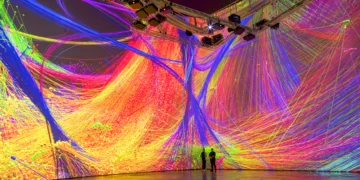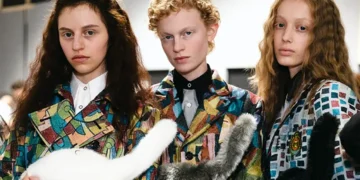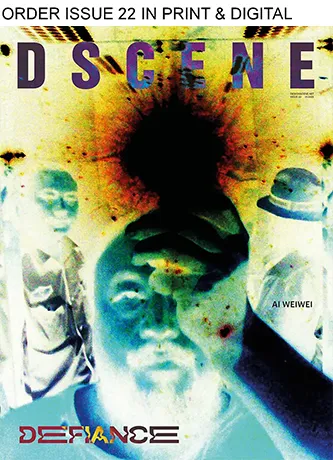
Refik Anadol a pioneer in AI-generated aesthetics, continues his exploration of machine intelligence as a medium for artistic expression in Living Architecture: Gehry. This groundbreaking exhibition, presented at the Guggenheim Museum Bilbao, redefines the boundaries of contemporary art by reimagining the architectural legacy of Frank Gehry through dynamic, ever-evolving visual narratives powered by artificial intelligence.
ART
Anadol’s immersive installation, occupying one of the Museum’s most iconic spaces, harnesses neural networks and open-access archival material to create a fluid, constantly transforming form. The AI processes and synthesizes vast datasets, transforming static architecture into a living, dynamic environment that reshapes itself in response to digital interpretation. The exhibition is supported by 1OF1 as Exhibition Partner, Euskaltel as Technology Partner, and with the collaboration of Google Cloud.
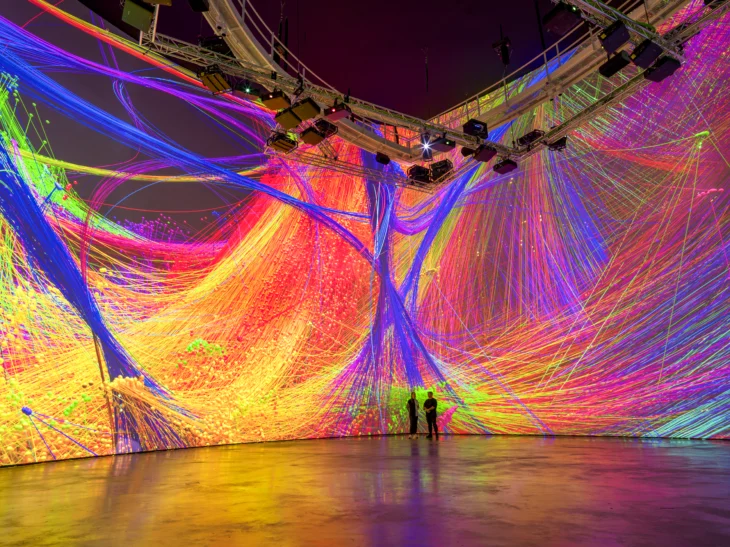
Anadol’s work transcends traditional artistic disciplines, merging architecture, artificial intelligence, and sound in a sensory dialogue. The exhibition is accompanied by a custom soundscape composed by longtime collaborator Kerim Karaoglu, integrating recordings sourced from within the Museum. These layered auditory elements heighten the experience, immersing visitors in an ever-changing environment where art, data, and memory converge.
The installation also marks the debut of Large Architecture Model (LAM), an advanced AI system developed by Refik Anadol Studio. LAM’s computational capabilities allow it to reinterpret Gehry’s architectural language, unveiling a new paradigm of digital artistry that engages both the tangible and the intangible.

Building on his seminal work WDCH Dreams, which questioned whether buildings could “learn and dream,” Anadol continues to investigate how AI-generated forms can reconstruct our perception of space. Living Architecture: Gehry is an example of the evolving synergy between human creativity and machine intelligence, offering a glimpse into a world where data becomes an artistic material, shaping new realities before our eyes.
View this post on Instagram
The exhibition also marks the launch of in situ, a new series dedicated to site-specific installations that push the boundaries of contemporary practices. Bringing together artists whose work spans visual art, technology, music, and performance, in situ explores new ways of perceiving and inhabiting space. The first exhibition in the series, in situ: Refik Anadol – Living Architecture: Gehry, presents a groundbreaking audiovisual installation that reimagines Gehry’s architectural legacy through artificial intelligence and generative art. Developed by Refik Anadol Studio, the custom-built AI model LAM has been trained for months on a vast archive of open-access imagery, sketches, and blueprints, transforming Gehry’s architectural language into ever-changing landscapes of dynamic form, color, and movement.
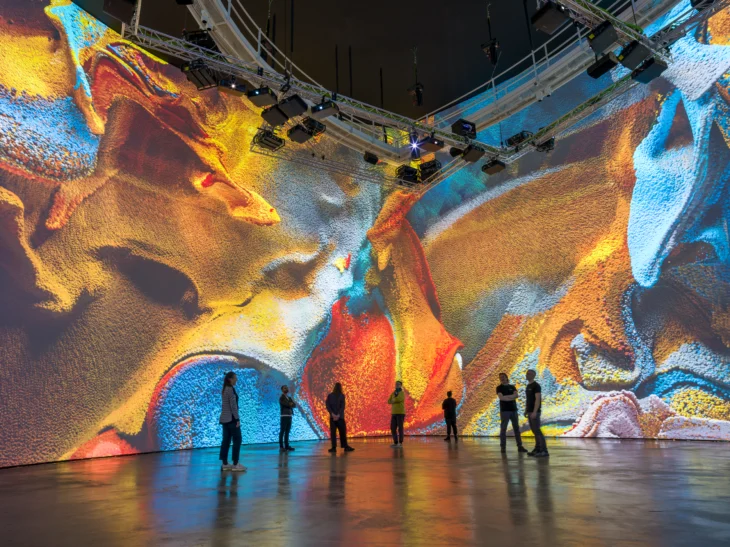
Living Architecture: Gehry unfolds across six interconnected chapters, each representing a distinct stage in the evolution of data into architectural imagination:
-
Chapter I: Data Universe – A vast constellation of materials and data—archival photographs, plans, and structural documents—are compiled into a memory space.
-
Chapter II: Data Plotting – As the data is processed, complex patterns emerge through the arrangement of form, texture, and spatial composition.
-
Chapter III: Data Tunnel – The data transitions into immersive visual environments in the latent space, inviting viewers to engage with the evolving process of human-machine collaboration.
-
Chapter IV: Large Architecture Model – By transforming Gehry’s forms, the AI generates new architectural possibilities that push the boundaries of imagination and design.
-
Chapter V: Machine Hallucination – A moment of abstraction, where AI-generated structures break free from conventional spatial constraints.
-
Chapter VI: Dreams – A return to the world of architecture, now envisioned through the limitless imagination of AI, where architecture transforms in real time, continuously generating new forms that emerge and evolve in the moment.
As the inaugural exhibition of the in situ series, Living Architecture: Gehry exemplifies the way Anadol explores the future of site-specific, AI-driven art, where data becomes material, and space becomes an evolving canvas of memory, form, and imagination. Built upon ethically sourced data and powered by sustainable computing practices, the installation reflects a conscientious approach to digital creation, where innovation and responsibility go hand in hand.
Complementing the exhibition, the Didaktika project provides educational spaces and interactive content to enhance visitors’ understanding of AI-driven art. In Gallery 204, an in-depth look at Anadol’s processes reveals how neural networks, data visualization, and machine intelligence are redefining artistic expression. Visitors can explore key AI concepts and their applications in the creative realm, offering a deeper appreciation of the technology shaping our digital age.
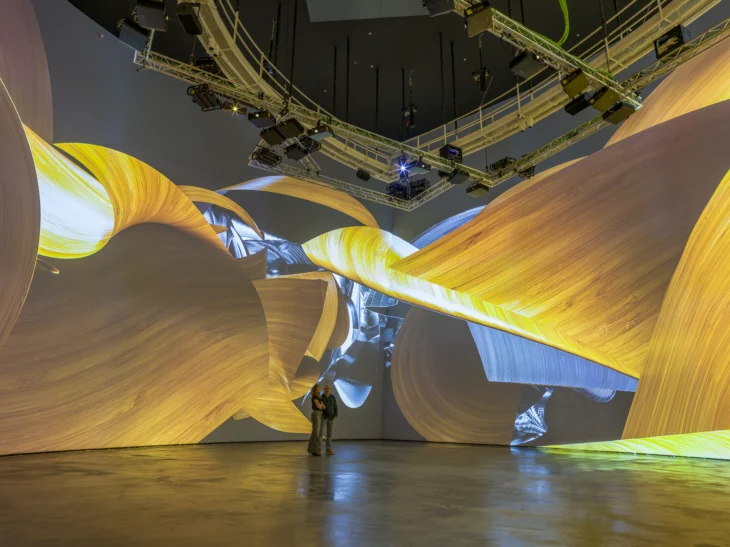
Born in Istanbul and based in Los Angeles, Refik Anadol is a trailblazer in the fusion of data and media arts. As the founder of Refik Anadol Studio (RAS), his practice extends across disciplines, engaging designers, architects, scientists, and researchers in a collective pursuit of redefining art in the digital age. His work has been showcased at leading institutions, including MoMA, Centre Pompidou-Metz, and the Venice Architecture Biennale.
Through Living Architecture: Gehry, Anadol challenges conventional notions of art and memory, transforming AI from a tool of replication into a medium of imagination. This groundbreaking exhibition invites viewers to step into a world where architecture breathes, data dreams, and machine intelligence elevates human creativity beyond the imaginable.
Living Architecture: Gehry will be on display at the Guggenheim Museum Bilbao until October 19, 2025, offering visitors a unique opportunity to experience this groundbreaking AI-driven installation.
